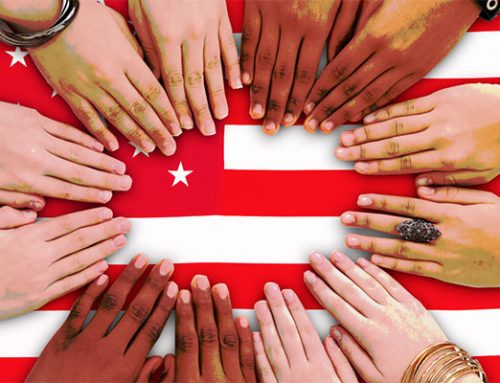We often take this humble bird for granted, but could humanity survive without it? Andrew Lawler investigates.

IF THE world’s cats and dogs disappeared overnight, millions of people would mourn their furry friends. If beef cattle suddenly ceased to exist, it would create economic crises in America, Argentina and Australia. But what if all of Earth’s 22 billion chickens succumbed to a scourge like bird flu? How would humanity cope?
 It’s a thought experiment whose answers show just how much human civilisation has come to rely on a single species. Without chickens, we would face “a starving world”, says Olivier Hanotte, a molecular biologist at the University of Nottingham, UK, who has studied the spread of the chicken around the globe. Close to one-third of the world’s meat supply and nearly all of its eggs would vanish. Pandemics and riots could ensue, unleashing a crisis of enormous proportions. This might seem far-fetched given how unremarkable the bird appears. But as a ubiquitous food source and more, it has pecked and scratched its way into almost every corner of human existence.
It’s a thought experiment whose answers show just how much human civilisation has come to rely on a single species. Without chickens, we would face “a starving world”, says Olivier Hanotte, a molecular biologist at the University of Nottingham, UK, who has studied the spread of the chicken around the globe. Close to one-third of the world’s meat supply and nearly all of its eggs would vanish. Pandemics and riots could ensue, unleashing a crisis of enormous proportions. This might seem far-fetched given how unremarkable the bird appears. But as a ubiquitous food source and more, it has pecked and scratched its way into almost every corner of human existence.
The story of the chicken-human bond is an ancient one. Some 3000 years ago, Polynesians took chickens with them on their expeditions to settle Pacific islands, using their bones to make sewing needles, tattooing implements and even musical instruments. Ancient Greeks considered the bird sacred to their god of healing, and believed its parts could cure illnesses ranging from burns to bedwetting. Roman generals kept a flock of chickens on hand before battles for military advice. If the sacred birds ate heartily before the conflict began, then the generals could expect victory; if they turned up their beaks, then best to retreat. And cockfighting is probably the oldest spectator sport after boxing.
Today, of course, the chicken is chiefly a source of food. In that role, it has become staggeringly abundant, outnumbering all the pigs and cows on the planet combined. Add in dogs and cats, and there would still be more
chickens. For every person, three chickens are alive and clucking today. Humans gobble down almost 100 million tonnes of chicken meat and over 1 trillion eggs annually. On a single day this year, Super Bowl Sunday, Americans ate an estimated 1.25 billion chicken wings.
More than 22 billion chickens live on the planet – three for every human
Yet this popularity is surprisingly new. As recently as 1950, Americans ate twice as much red meat as chicken. Today that situation is reversed. The chicken’s rise began after the second world war, when US poultry breeders
developed a bird for mass production that grew bigger breast muscles, required less feed, took far less time to mature, and produced tender meat that could be carved almost like a steak.
This highly engineered animal now powers huge poultry industries throughout the world. Though people in Asia still eat fewer chickens than North Americans, they are catching up: chicken is poised to surpass pork – the traditional Chinese favourite – as the world’s most popular meat by 2020.
What would we do without it? Recent events suggest we could be in big trouble. Mexicans eat more eggs than anyone else – about 330 each year, on average – and when egg prices shot up in Mexico City in 2012 following the culling of millions of sick birds, demonstrators took to the streets in what was dubbed “The Great Egg Crisis”. During the 2011 uprising in Egypt, angry protesters rallied to the cry: “They are eating pigeons and chicken, but we eat beans every day!” When poultry prices tripled in Iran recently, the nation’s police chief warned television producers not to broadcast images of people eating chicken to avoid inciting violence. Across the Persian Gulf in Saudi Arabia, chicken feed is subsidised to keep meat prices low and a potentially restive population quiet.
Why has the chicken – rather than, say, the duck or yak – emerged as the single most important animal species for humanity? The answer lies partially in its remarkable adaptability.
Charles Darwin, who spent a good deal of time and money studying the bird, was one of the first to realise this. He collected chickens from all over the world, many of which he bequeathed to the Natural History Museum in London. Some are skins that were prepared using a particular technique. “You remove their innards, pop out the brains and eyes, and sew them back up,” curator Joanne Cooper explains cheerfully when I visited the collection.
Through typically patient study, Darwin deduced that all varieties of domestic chicken descended from the red jungle fowl, a shy and elusive pheasant that lives across south Asia and parts of China, and is adapted to a variety of habitats. His conclusions were confirmed in 2004, when the bird’s genome was sequenced.
The red jungle fowl, which was domesticated at least 4000 years ago, bequeathed the chicken a genome forged by a wide range of environments, from Himalayan foothills to Sumatran jungles. Along the way, the domestic chicken may have also picked up genes from other jungle fowl subspecies, including the Indian grey jungle fowl. “What is remarkable about the chicken is its genetic diversity,” says Hanotte. “It’s probably the most genetically diverse species of livestock, with the possible exception of pigs.” This has not only helped the village chicken thrive on every continent except Antarctica, but has also allowed humans to breed what American ornithologist William Beebe called “beautiful, bizarre, or monstrous races” of chickens, from fluffy silkies to leggy langshans.
 The rise of the chicken is not necessarily a bad thing, in fact, the bird is something of an environmental hero. To understand its impressive efficiency, let’s imagine the impact of replacing chicken with meat from other livestock animals.
The rise of the chicken is not necessarily a bad thing, in fact, the bird is something of an environmental hero. To understand its impressive efficiency, let’s imagine the impact of replacing chicken with meat from other livestock animals.
Beef, which makes up about a quarter of the meat eaten in the US, would be the most disastrous replacement. Kilogram for kilogram, we would have to find over 1000 per cent more land for beef than is used to produce chicken, an area larger than China and India combined.
Cows convert food into meat far less efficiently than chickens, so even if we turned entirely to intensively raised grain-fed cattle we’d need to provide them with eight times as much feed to get the same amount of meat. Given
that growing food for livestock already takes up around a third of the arable land on Earth, there might not be room.
What about pigs? We would need to at least double the number from 1 to more than 2 billion to take care of the meat shortfall, and more of the planet would need to become farmland since pigs require almost 14 per cent
more feed than chickens to produce a kilogram of meat.
If we’re talking about the environment, there’s also the matter of gas. Unlike chickens, cows and sheep ferment their meals in a bacteria-rich stomach called the rumen, producing large amounts of the potent greenhouse gas methane in the process. Beef is responsible for almost four times the amount of greenhouse gas (including carbon dioxide) per kilogram of meat as chicken, while lamb produces over five times as much. Switching to cheese as a source of protein would almost double greenhouse gas emissions, while turning to pork would increase them by 75 per cent. Satisfying the world’s insatiable demand for meat without chickens would slam down the gas pedal on global warming.
What about other birds? Ducks and turkeys might seem like sensible replacements, but they have several drawbacks. You can’t put turkeys and geese into small enclosures, and ducks need water. “You don’t find ducks in
semi-desert subsisting on vermin,” says Hanotte. “Ducks are adaptable, but they’re not as adaptable as chickens.” Turkeys are not as efficient egg producers, and neither species produces as much meat as chickens do on the
same feed. “Ducks and turkeys have their niche, but they are not going to be competitors,” says Hanotte. He thinks that, in terms of protein, insects rather than ducks would be the most likely replacement.
Avian lifesavers
The nascent insect protein market might well expand, but in the meantime demand for seafood would surge, potentially pushing many of the world’s fisheries – which currently produce some 80 million tones per year – to collapse. Aquaculture would ramp up, but it would take time to increase production (now about 60 million tones a year) to make up for all that chicken.
Some countries might be able to keep their populations in meat – the US, for example, could halt all beef and pork exports and return to something resembling its pre-1950 meat eating habits. And for those Westerners willing to explore plant-based meat substitutes, foods such as textured wheat protein (already used in “chicken-less nuggets”) would likely become more widespread. Such a switch could make a difference to the environment: if we all swapped chicken for beans, for example, greenhouse gas emissions would be much lower. Chicken is responsible for 6.9 kg of greenhouse gases per kg of meat, compared with 2 kg for bean protein (see diagram, left).
Other places might not fare so well. In parts of Africa and Asia, where chicken is common street food and even the poorest can keep a fowl or two in their backyard, the bird’s demise would lead to skyrocketing malnutrition rates. Chicken meat and eggs are particularly rich in the essential amino acids lysine and threonine, which our bodies cannot manufacture. “It is impossible for the world to exist as it does today without the animal protein via chicken eggs and meat,” says Jianlin Han, a biologist at Beijing’s Institute of Animal Science in China.
 So much for nutrition. The chicken plays another, more hidden role in society: its eggs are crucial for making flu vaccine. To produce the world’s 400 million annual doses, cultured flu strains are injected into fertilised eggs, a nutrient-rich and otherwise sterile environment in which the virus quickly multiplies. The virus-laden fluid is harvested, and the virus killed or weakened, with one egg equalling approximately one vaccine.
So much for nutrition. The chicken plays another, more hidden role in society: its eggs are crucial for making flu vaccine. To produce the world’s 400 million annual doses, cultured flu strains are injected into fertilised eggs, a nutrient-rich and otherwise sterile environment in which the virus quickly multiplies. The virus-laden fluid is harvested, and the virus killed or weakened, with one egg equalling approximately one vaccine.
“It’s just amazing how well influenza virus grows in eggs,” says Doris Bucher, a microbiologist whose lab at New York Medical College is one of just three in the world that grow flu strains for the annual vaccine.
“It’s the cheapest way to produce it.” The US in particular has funded a hunt for alternatives to the egg-based vaccine, in part because of fears over what might happen if chickens disappeared. “There was a concern that if you had H5N1, that it could wipe out every chicken on the planet,” says Bucher.
Swiss pharmaceutical company Novartis has developed an alternative called Flucelvax grown in the kidney cell line of a cocker spaniel, which was approved in Europe in 2007 (under the name Optaflu), and in the US in 2012. The drug is only approved for people aged 18 and older, however, and it would take time to scale up to meet worldwide demand. “Things could change, but we’re certainly not there yet,” says Bucher.
If the chicken were to disappear, one flu season could kill 50,000 people in the US alone, Bucher estimates. And if a new swine flu or similar pandemic broke out, humanity would have little defence against its ravages.
Adieu, souffle
Of course, amid the riots and malnutrition and illness, our sweet tooth would suffer too. The disappearance of eggs would change pastry as we know it, says Ludwig Hely, executive pastry chef at The Savoy hotel in London. “It would be terrible. It is by far the hardest ingredient to replace,” he says. “Flour is easy, but if we didn’t have eggs, we would lose the structure and lightness.” Eggs from ducks or even quails might provide a substitute, but their relative rarity would make pastry an expensive treat. Meanwhile, egg replacements would become more common, with ingredients like silken tofu, baking powder and flaxseed meal being used to bind and leaven dough. Such ingenuity will be familiar to those who experienced rationing during the second world war. Some are already working on a modern-day version of this resourcefulness: Jason Sellers, head chef at Plant, one of the US’s top vegan restaurants, says that he has figured out how to make an eggless meringue. Yet even he admits that sometimes eggs are impossible to replace. “There are some things that you just can’t do without eggs, such as souffle,” he says.
The consequences of a chicken exodus would not be all bad. Fewer people would contract salmonella. The bacterium, which is most often found on raw chicken, kills about 115,000 people worldwide every year, and sickens tens of millions.
Anyone concerned about animal welfare would surely cheer the fact that billions of chickens, which under the laws of most governments have no protection and lead short and brutal lives, would finally be freed from servitude, even at the cost of extinction. Anthropologist Steve Striffler, whose book Chicken explores the history of the bird’s industrialisation, says that while the chicken is a crucial source of protein to the world’s rural poor, its disappearance in developed economies might not be a bad thing. “About 75 per cent of chickens are produced industrially in the First World,” he says. “They are raised under extremely bad circumstances and essentially have no lives. And all this for food that is often produced in ways that are bad for workers, consumers, and the environment.”
How likely is Chicken Armageddon? The bird is increasingly concentrated by the million in enormous farms, and therefore is more susceptible to the spread of disease than most village birds. Avian flu a decade ago resulted in the culling of over 100 million birds across Asia, and has reared its head again this year. Yet the chicken is nothing if not a survivor. It has spent the last several thousand years alongside humans. And every year, it becomes more inexorably bound up with our well-being. The sky might not fall, but a chicken-less planet would be nothing to crow about.



